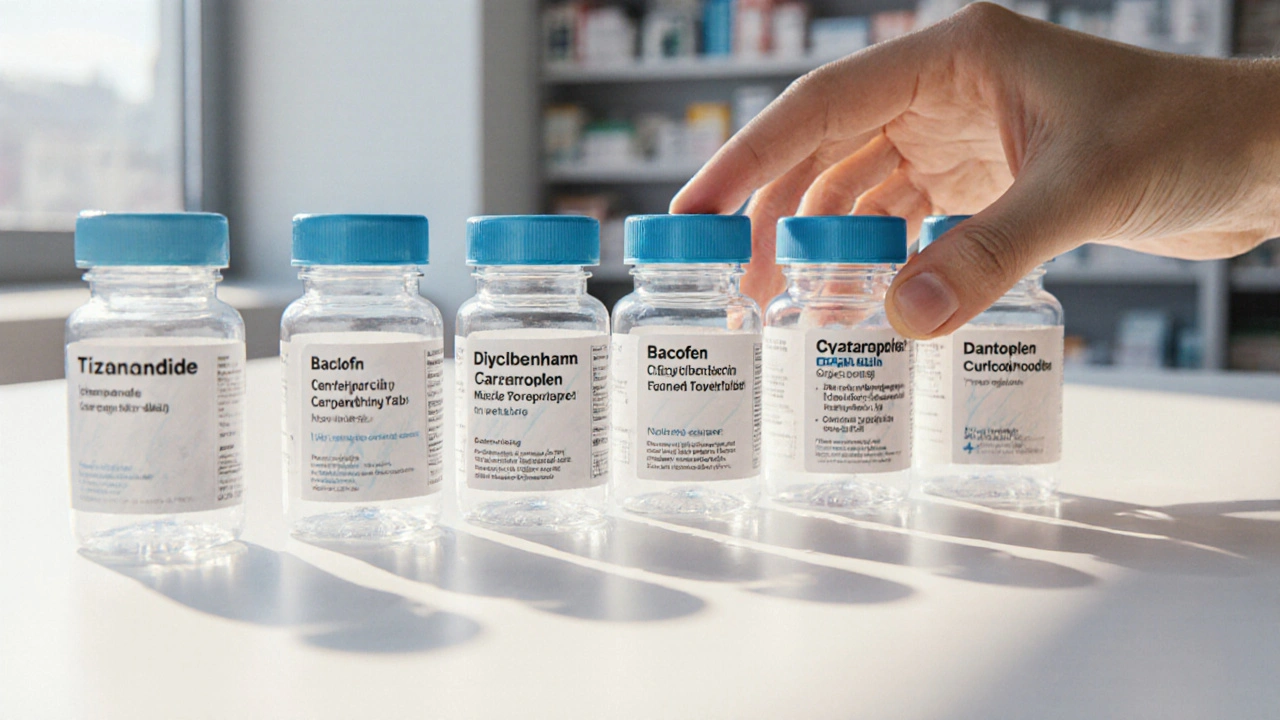
A detailed comparison of Tizanidine with common muscle‑relaxant alternatives, covering dosing, side effects, best‑use scenarios and a helpful decision checklist.
When talking about Baclofen, a prescription muscle relaxant that targets spasticity. Also known as Lioresal, it’s commonly used to ease the stiffness that comes with neurological conditions. Muscle spasticity, involuntary muscle tightness that limits movement is the main problem Baclofen aims to calm. People with multiple sclerosis, an autoimmune disease that attacks the nervous system often rely on this drug to keep their legs from locking up. Understanding how these pieces fit together helps you see why Baclofen shows up in so many treatment plans.
Baclofen isn’t a simple painkiller; it’s a GABA analogue. It binds to the GABA_B receptor, a brain‑and‑spinal‑cord receptor that reduces nerve firing, which in turn relaxes overactive muscles. Doctors usually start with a low dose and increase gradually to find the sweet spot where spasticity eases without too many side effects. The drug’s half‑life is about 2‑4 hours, so most prescriptions call for multiple doses a day. If you’re new to Baclofen, keep a log of how your muscles feel after each dose – it’s a quick way to spot patterns before your next doctor visit.
Side effects are part of the picture. Common complaints include drowsiness, dizziness, and mild weakness, especially when you first begin taking the medication. More concerning is withdrawal syndrome, a set of symptoms that appear when the drug is stopped abruptly. People report anxiety, fever, and even seizures if they taper off too fast. The safest route is a doctor‑guided taper, cutting the dose down over weeks rather than days. Knowing this risk lets you plan ahead, especially if you think you’ll need to pause treatment for surgery or a vacation.
Beyond spasticity, many clinicians explore off‑label uses for Baclofen. Some patients with chronic lower‑back pain find that the muscle‑relaxing effect cuts down on tension‑related aches. Others with neuropathic pain after a stroke report modest relief when combined with physical therapy. Speaking of rehab, pairing Baclofen with targeted stretching and strength exercises can boost mobility faster than medication alone. The drug softens the muscles, making it easier to work on range‑of‑motion drills without triggering painful spasms.
Safety checks are a must. Baclofen is cleared by the kidneys, so anyone with reduced kidney function should get a lower dose or consider alternatives. Pregnant or breastfeeding mothers need special guidance because the drug crosses the placenta and appears in breast milk. Also, avoid mixing Baclofen with other central‑nervous‑system depressants like benzodiazepines or alcohol – the combined sedation can be dangerous. Always tell your pharmacist about every medication you take, even over‑the‑counter supplements.
Now that you’ve got the basics – what Baclofen is, how it calms muscle spasticity, the role of the GABA_B receptor, and the importance of a careful taper – you’re ready to dive deeper. Below you’ll find a curated set of articles covering everything from dosage tips and side‑effect management to real‑world stories of living with multiple sclerosis while on Baclofen. Use them as a toolbox to make informed decisions and keep your muscles moving the way they should.

A detailed comparison of Tizanidine with common muscle‑relaxant alternatives, covering dosing, side effects, best‑use scenarios and a helpful decision checklist.